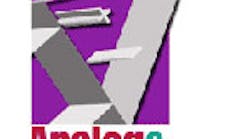Both explained that Linear Technology was born out of frustration with their previous company, National Semiconductor. They were at odds with management over the direction the company was taking, and they did something about it.
At the time, venture capital could be secured by two established engineers interested in starting up a semiconductor company focused on designing analog parts such as analog-to-digital converters (ADCs) and digital-to-analog converters (DACs).
"My experience with venture capital is limited to our raising of money, which was not hard, because of our reputation," Dobkin said. "I think it was a little easier, especially for semiconductor companies, to get started back then. Because of the rapid growth of semi companies, it was easy for the venture capitalist to see how they'd get their money back."
Staying in Business
Finding venture capital to fund a company is one thing. Keeping it going for 30 years is another. The first decade of the 21st century was especially trying, with two recessions within the space of eight years. I asked Swanson about the ups and downs of the business, and he gave me a candid reply (see "As Linear Technology Turns 30, Electronic Design Interviews Co-Founder Bob Swanson").
"When the dot-com bubble burst (in 2001), we saw our sales fall from basically a billion dollars a year to half a billion almost overnight," he said. "We had to scramble. We had to cut costs."
Swanson said that Linear had to shut down its 4-in. fab, not because it wasn't profitable, but because the company had just built a larger fab. Essentially, Linear had a choice of supporting the big fab or the small one and chose the big one.
"We had some minor layoffs, but we didn't panic. We made some adjustments. We had to cut our spending," Swanson explained. "At the end of the day, we turned in sizable profit margins at half a billion in sales, which was half our sales two quarters before."
In the crunch of 2008, Linear's sales went from $310 million a quarter to $200 million a quarter over a five- to six-month period. But it had learned from the dot-com bubble. Swanson said he felt the company was financially healthy and would still make a profit and have positive cash flow, just on a much smaller sales base.
"So we did not hit the panic button. Yes, we had to deal with expenses. Yes, we had to have factory shutdowns. Yes, we had to have pay cuts. But we kept the team together," he said.
"As luck would have it, and what a lot of people don't know, is if our sales had fallen below $200 million a quarter, then the steps that we took wouldn't have been sufficient. But we bottomed at $200 million and then quickly roared back to $400 million after the crisis subsided."
The Industrial Market
According to its annual report, Linear's largest end market is industrial by almost two to one over its next largest market. I asked why.
"This has been a difficult question for me to answer since I was pitching the company to investors, sort of like, what is this industrial? What does it mean?" Swanson said.
"And the good news about it is that this segment purchases all our products from A to Z. The number of customers is in the thousands, so therefore the competition is diffused and the applications are numerous. It's kind of a long tail, and it surfaces almost every place you look."
Managing Innovation
Don asked Dobkin about managing the development of new products and how he makes them come out on schedule without throttling the innovation of the engineers who are doing the design (see "As Linear Technology Turns 30, Electronic Design Interviews CTO And Co-Founder Robert Dobkin").
"When we start, we do have a schedule dictating when the products are supposed to come out, and we try to make it come out on that schedule," Dobkin said. "Things don't always work right when you're inventing, so sometimes it takes longer, a lot longer. Innovation doesn't always work on your time schedule."
Apparently, the process has worked well enough and often enough to establish Linear Technology as one of the great analog companies. Congratulations to both men and the entire company on its 30th anniversary.
